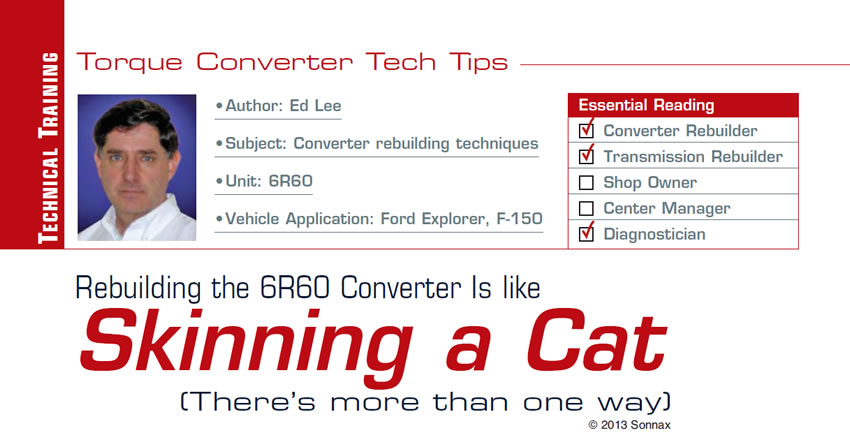Helping or Hurting
When you cut open a rebuilt converter, you never know what you will find. There are always similarities in the converters because most rebuilders follow the same basic format. It is the differences in the rebuilt converters that make them stand out.
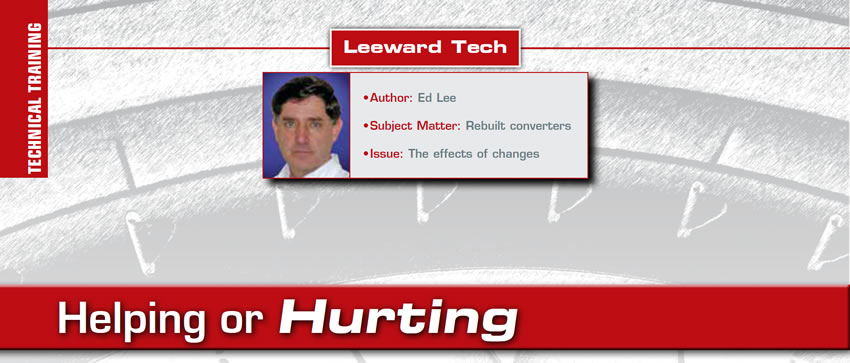
Ins and Outs of Torque Converters
Plotting the pathways of the oil that enters and exits the converter is not an easy task if you are only looking at the parts of the converter. Adding a stator support and an input shaft to the converter parts makes this task somewhat easier.
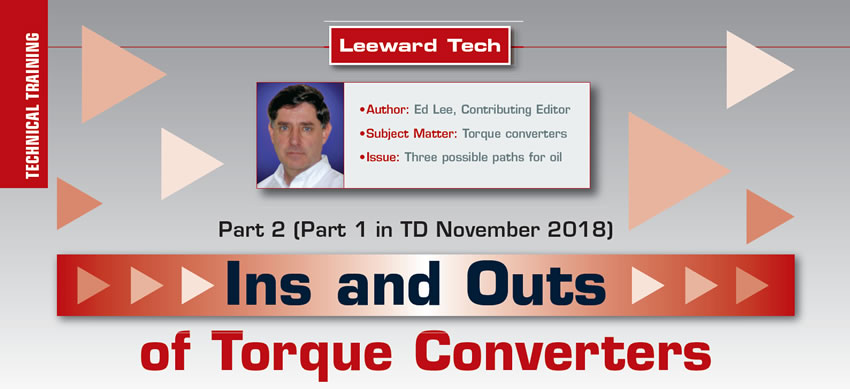
Ins and Outs of Torque Converters
Ed Lee presents a two-part project about the ins and outs of torque converters, starting with the outs.
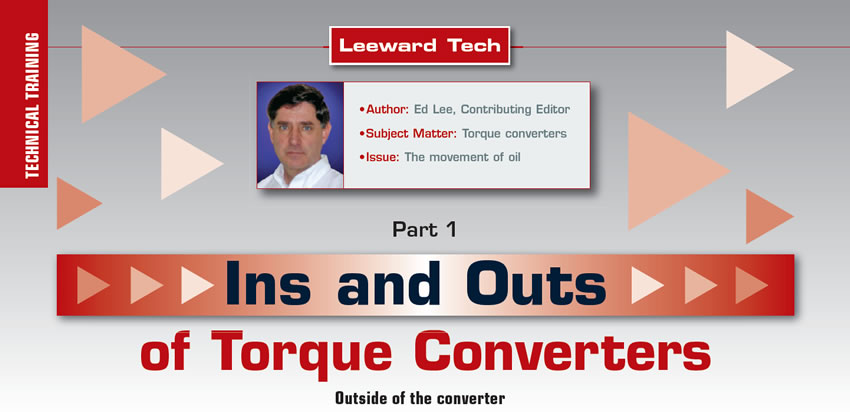
Extreme Stator Repair
When you are rebuilding a late model converter it is very important to have the correct stator, impeller and turbine. The computers in today’s vehicles are sophisticated enough to pick up small changes in the stall or stall torque ratio in a converter. If a change is detected by the computer it will set a code.
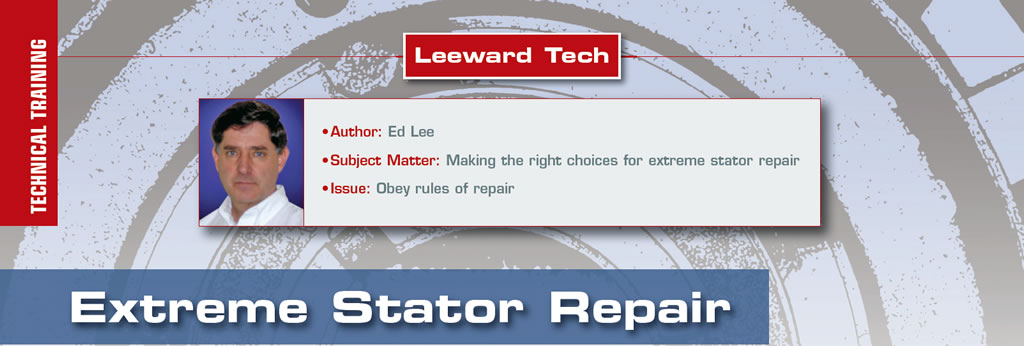
The Importance of a Positive Seal: 722.6 Issues
There are at least two major issues that are caused by the lack of a positive seal in 722.6 converters. One issue is the shutter on TCC apply and the other is insufficient or no cooler flow. These seemingly unrelated complaints share a common cause, but the cause-and-effect relationships are quite different.
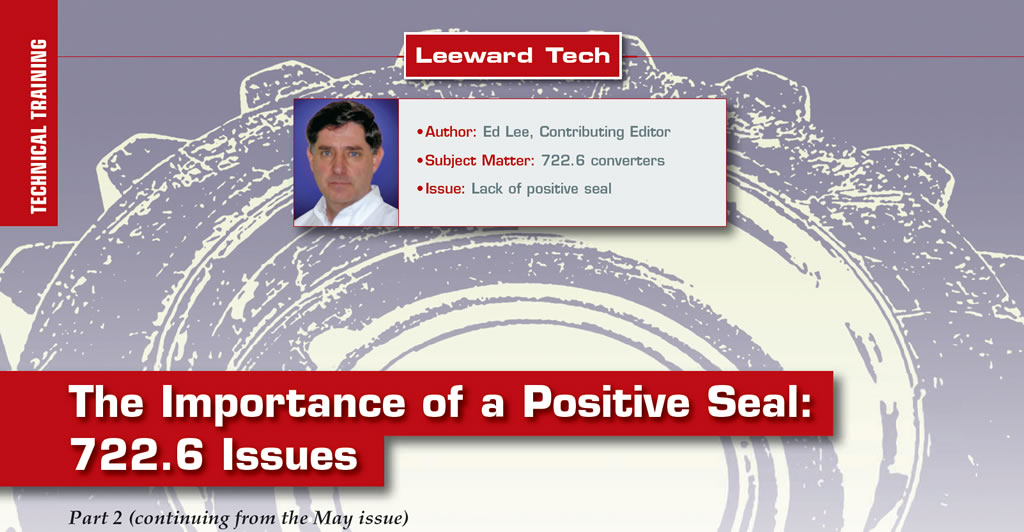
The Importance of a Positive Seal
Toyota has been plagued by torque converter clutch (TCC) issues for many years. The shudder issues started with the on-off lock strategy and continue with the present-day advanced strategies. Any Toyota 2002 and newer front wheel drive vehicle can have this issue. There are currently two technical service bulletins (TSB) that address this issue.
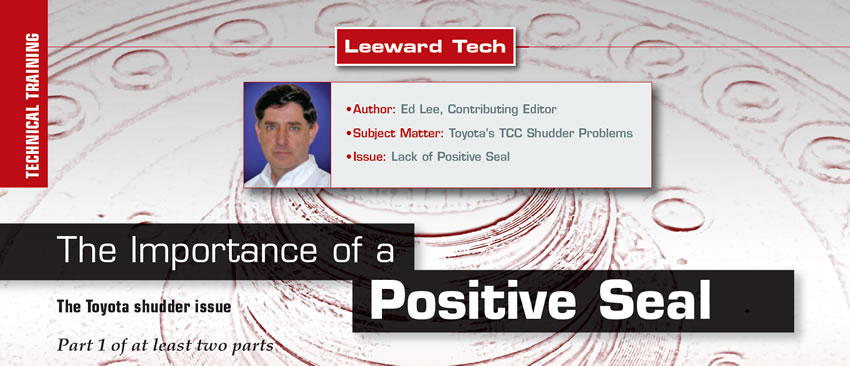
1997 ZF Manual Valves
A 1997 Porsche Boxster was towed to a transmission shop. The vehicle was equipped with a ZF5HP19 transmission (Porsche calls this transmission A86.00 Tiptronic) and had 48,408 miles on the odometer. The customer complaint was that the vehicle would drive fine when cold, but the warmer the transmission got, the greater the effort to move the shifter. The shifter would get to a point that it would not move at all. At one point the shifter assembly broke because of the force applied to it.
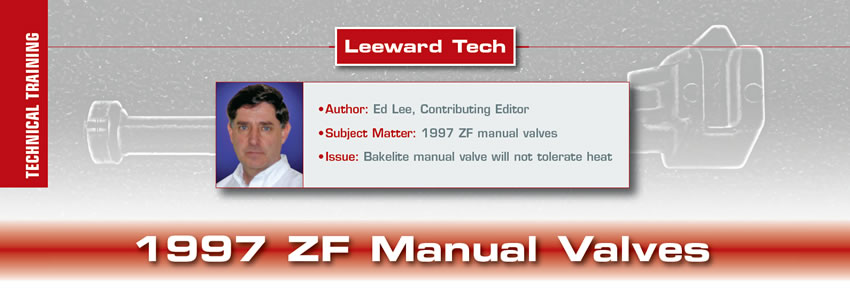
Solving the 6R80 Leak Mystery
When the vehicle was inspected on a lift, it appeared to have multiple leaks, but the most prominent leak seemed to be coming from the case connector. A data search found three bulletins related to a leak at the case connector…
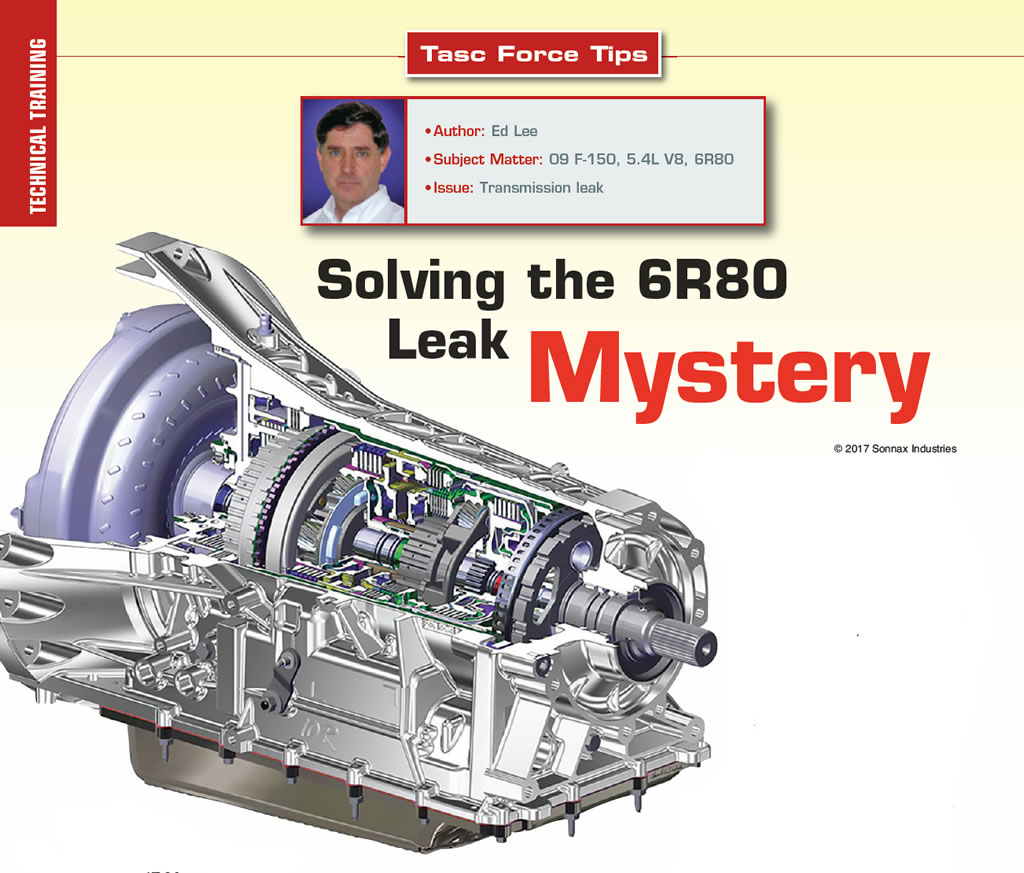
Identifying Converter Components
Whether you are searching through a core pile or looking for a specific part to complete a rebuild, sorting out the various identifying features of Ford E4OD, 4R100 and 5R110W converters can drive you crazy. A six-stud version of each converter that happens to have the same K factor (impeller blade angle) will look almost identical. If you have not educated yourself on the subtle contour differences where the impellers mate to the impeller hubs, or cannot recognize the 0.200″ difference in the relationship of the pilot to mounting pad difference in the 5R110W compared to the E4OD and 4R100, you can become easily frustrated. The following are part-by-part differences, as well as some hints for identifying each one.
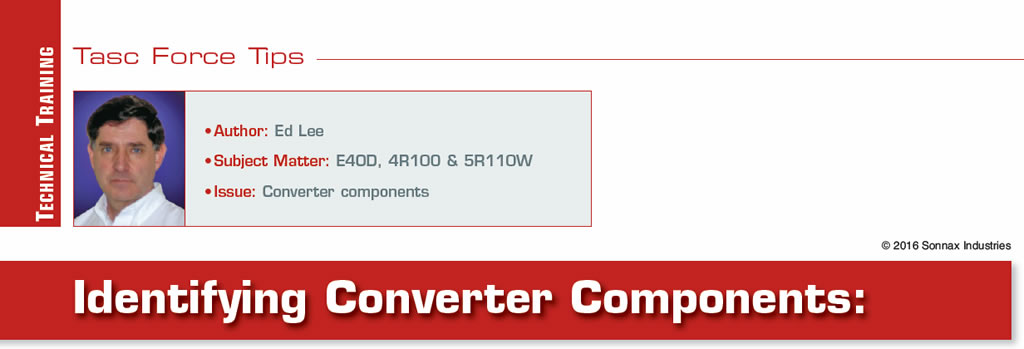
Properly Diagnose a 722.6 Shudder in Vehicles with MDS System Engines
A 2007 Dodge Charger equipped with a 5.7L V8 engine and 722.6 transmission was brought to a transmission shop. At the time of the visit, the vehicle had more than 88,000 miles on the odometer. The customer told the service writer that the vehicle had previously been to four different repair shops in a failed attempt to eliminate a downshift shudder and cold-stall condition. A technician road-tested the vehicle and described the condition as a vibration when coming to a stop and — since it was February in the Northeast — the cold-stall condition also was quickly verified.
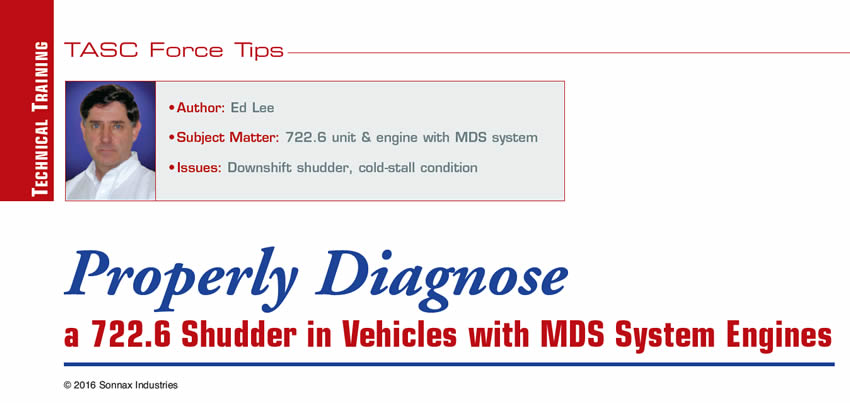
Salvaging Late-Model 4L80-E Stators
As if having another wave of cracking pistons was not bad enough, the problems with the second-generation stators were even worse. The first issue rebuilders noticed was excessive wear in the stator housing where the roller-clutch inner race contacts the housing. On some converters, the inner race would wear its way out through the stator housing and into the impeller hub. This was especially problematic because – unlike in the first generation – the impeller side of the stator was not a removable stator cap.
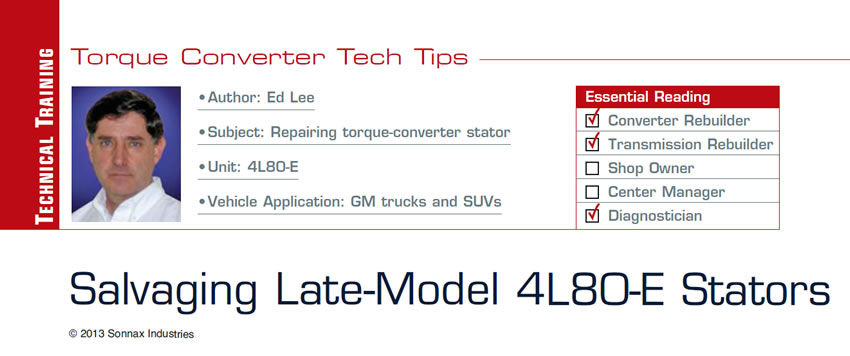
Rebuilding the 6R60 Converter
Ford introduced the 6R60 transmission in 2005, when it was originally used for Explorers equipped with the 4.6L gas engine. In 2008 and 2009, the 6R60 transmission also was used in some 4.6L F-150 pickups. The 6R60 transmission comes with a multi-plate, captive-clutch converter with a unique design. One single-sided clutch disc rests against the cover. This clutch disc has 12 tangs that engage the turbine arranged in groups of three around the disc’s outer diameter. The clutch disc is sandwiched between the cover and a two-sided clutch disc that is attached to the cover in six positions close to its inner diameter.
